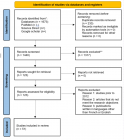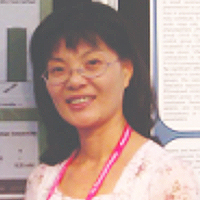Table of Contents
Focal Ab-amyloid deposition precedes cerebral microbleeds and Superficial siderosis: a case report
Published on: 13th October, 2017
OCLC Number/Unique Identifier: 7317598597
This case report presents in-vivo findings on the spatial and temporal relationship between focal Ab-amyloid deposition, cerebral micro-haemorrhages and superficial siderosis. A 65-year-old woman underwent 11C-PiB PET scans that revealed an atypical focal and asymmetrical pattern of Ab-amyloid deposition and MRI scans that revealed cerebral micro-haemorrhages and superficial siderosis. Almost all micro-haemorrhages were associated with focal Ab-amyloid deposition. Follow-up 11C-PiB PET and MRI scans showed progression of the disease. We speculate that Abamyloid deposition affects the structural integrity of arterioles, thereby predisposing them to micro haemorrhages. In support of this hypothesis, progression of MRI lesions was observed only in areas associated with Ab-amyloid deposition.
Experimental ‘hindbrain related’ syringomyelia: some mechanisms of spinal cord damage
Published on: 6th October, 2017
OCLC Number/Unique Identifier: 7317596430
Syringomyelia in combination with inherent or acquired hindbrain abnormalities is the non seldom and at the same time controversial issue.
Purpose: The etiology and pathogenesis creates a lot of discussion.
Methods: Experimental syringomyelia was induced in 20 anesthetized rabbits by injecting 0.5 ml of 25% kaolin suspension into the cisterna magna. Six rabbits with puncture and injection sterile saline NaCl were used as a control. The animals were sacrificed 1, 2, 4 and 6 months after the kaolin injection. Four hydrocephalus rabbits were sacrificed in 17 hours after the puncture of lateral ventricle with injection of solution of colloidal gold labeled human albuminum. The sections of the brain and spinal cord were stained with hematoxylin and eosin by Nissle and Marchi methods and with immunogold technique. Retropharyngeal lymph nodes of the animals were examined by electron microscopy.
Conclusion: Our observation showed that water hammer effect and internal destruction of the spinal cord may lead to continuous antigen stimulation of regional lymph nodes and play an important role in pathogenesis of experimental syringomyelia.
Lateralized Cerebral Amyloid Angiopathy presenting with recurrent Lacunar Ischemic Stroke
Published on: 30th August, 2017
OCLC Number/Unique Identifier: 7317627577
Here we reported an interesting case of an 84-year-old woman with acute onset of paresis of left arm and paresthesia of left face and arm. The symptoms resolved within two hours. She also had a similar prior episode two weeks ago with only left arm paresthesia. Her MRI revealed different stages of lacunar ischemic lesions. Interestingly, the SWAN sequences showed lateralized rather than global multiple microhemorrhages over the right MCA and PCA territory, and the sulcal hyperintensity on FLAIR was also seen with no associated susceptibility effect and minimal enhancement, indicating probable cerebral amyloid angiopathy (CAA) based on Boston Criteria.
It has been acknowledged that the CAA could manifest with certain localization preference. Cerebral microinfarct and white matter disease in CAA have been more often observed in the posterior circulation territory, however the restricted lateralization reported in our case has not been seen. Since CAA is often diagnosed when the characteristic MRI findings are picked up incidentally, recognizing this as a potential “TIA mimic” will be important for guiding treatment due to its higher risk of bleeding. In summary, this case highlights that the CAA could present as restricted lateralized lesions and occur as transient neurologic deficits, which to our knowledge has not be reported before. Recognition of it as a potential manifestation of CAA will be valuable in the clinical diagnosis process.
Direct Carotid Puncture for Flow Diverter Stent Insertion
Published on: 30th June, 2017
OCLC Number/Unique Identifier: 7317653750
Objective: To report our experience of direct carotid puncture and its use in the management of a large and rapidly expanding cavernous aneurysm.
Methods: A patient with a cavernous aneurysm that measured 25mm in maximum diameter underwent treatment with flow diversion. The initial treatment strategy was parent vessel occlusion however she failed the balloon occlusion test at 3 minutes. Due to extremely tortuous vessels stable access via a common femoral artery approach was impossible to achieve. We present our strategy, the post-operative management and long term results.
Results: Using a direct carotid puncture three telescoped Pipeline embolisation devices were successfully deployed across the neck of the cavernous aneurysm without complication. The puncture site formed a stable platelet plug after direct compression with an ultrasound probe for 90 minutes with no post-operative complications either intracranially or at the neck puncture site. At 2 year follow-up the aneurysm is completely excluded from the circulation.
Conclusion: Direct carotid puncture can be used as access for intracranial interventional procedures even if patients are on dual anti-platelet medication.
Protective functions of AEURA in Cell Based Model of Stroke and Alzheimer disease
Published on: 6th June, 2017
OCLC Number/Unique Identifier: 7317651488
Stroke and neurodegenerative diseases including Alzheimer’s disease (AD) are responsible for a major proportion of mortalities in the elderly. We have previously investigated novel mechanism-based therapies of AEURA in cell culture models against viral infection and in glutamate excitotoxity. In our new studies, we propose that the homeopathic formula AEURA could serve as a potential therapeutic agent for stroke & for AD. In examining AEURA treatment of PC12 cells exposed to glutamate excitotoxicity, hypoxia /re-oxygenation injury and A-Beta toxicity. We demonstrated an increased survival rate in AEURA treated cells by comparison to control cells. In examining the therapeutic potential of AEURA in PC12 cells this homeopathic agent was found to be neuroprotective against either glutamate induced toxicity, hypoxia /re-oxygenation stress or cell stress resulting from viral infection (with either HSV-1 or rhinovirus). Our ongoing studies involve examining the neuroprotective potential AEURA in vivo using rodent models of stroke & AD.
The “Calcium Paradox” Due To Ca2+/Camp Interaction: New Insights for the Neuroscience Field
Published on: 21st February, 2017
OCLC Number/Unique Identifier: 7317597469
In the cardiovascular field, tachycardia and increment of catecholamine plasma levels (sympathetic hyperactivity) have been reported by hypertensive patients that use L-type Ca2+ channel blockers (CCBs) since 70´s. Our discovery of the involvement of interaction between the intracellular signalling pathways mediated by Ca2+ and cAMP (Ca2+/cAMP interaction) revealed that this phenomenon (sympathetic hyperactivity) was resulting of increase of transmitter release from sympathetic neurons stimulated by CCBs due to its interference on the Ca2+/cAMP interaction. In the neuroscience field, this discovery has produced new paths for the understanding of the cellular and molecular mechanisms involved in the pathogenesis of neurodegenerative diseases, such as Alzheimer´s and Parkinson’s diseases. In this way, novel journeys for the development of new pharmacological strategies more effective for the treatment of neurodegenerative diseases may be initiated.
Analysis of early Versus Delayed Carotid Surgery after Acute Ischemic Stroke
Published on: 3rd January, 2017
OCLC Number/Unique Identifier: 7317595689
Objective: We evaluated the 30-day outcomes of early (≤ 14 days) or delayed (15 days to three months) carotid revascularization (CR) performed in patients who presented acute brain infarction secondary to internal carotid artery (ICA) stenosis.
Methods: We included all patients with a recent cerebral infarction from July 2010 to June 2014 who underwent CR in our center within three months after the onset of symptoms for ICA stenosis. Data were retrospectively collected. Two groups were identifi ed: Group A included patients who underwent early CR within the first fourteen days after symptom onset, and Group B, patients who underwent delayed CR, from the fifteenth day up to the third month after symptom onset. Death, stroke and major adverse cardiac events (MACE) were analyzed.
Results: Seventy-one patients underwent CR (73.2% men, with a median age of 71). Nineteen patients underwent early CR and 52 underwent delayed CR. The mean interval from initial examination to surgery was 9.5 days (range, 3-14 days) in Group A and 42 days (range, 15-92 days) in Group B. No complication occurred in Group A within the 30 postoperative days. In Group B, no MACE or death was observed and two patients presented with post-operative stroke (3.8%).
Conclusion: This retrospective study confi rmed the satisfactory outcomes of early CR after acute brain infarct. Accurate clinical and radiological selection of patients prevents early neurological complications.

If you are already a member of our network and need to keep track of any developments regarding a question you have already submitted, click "take me to my Query."


















































































































































